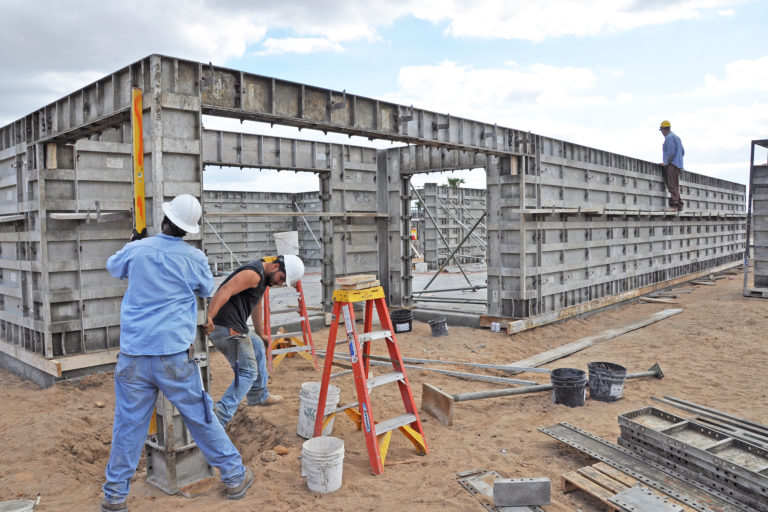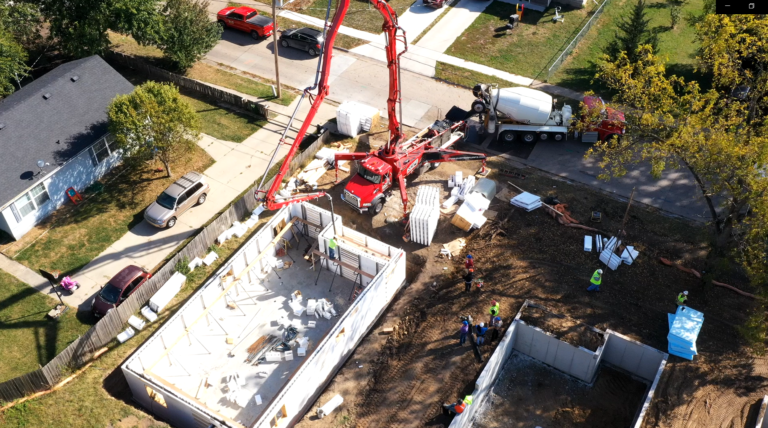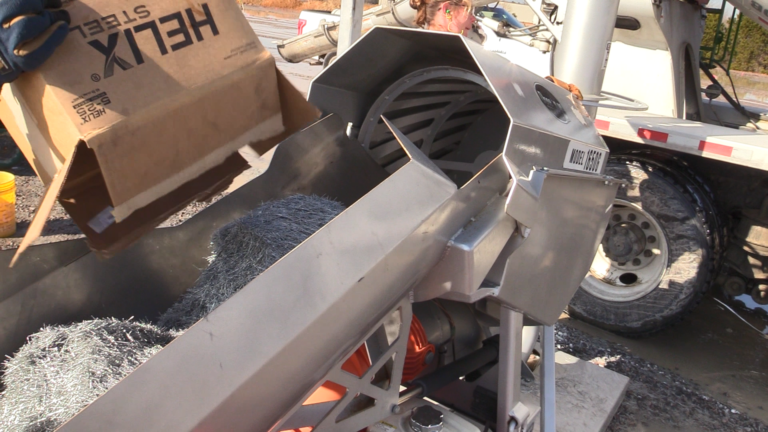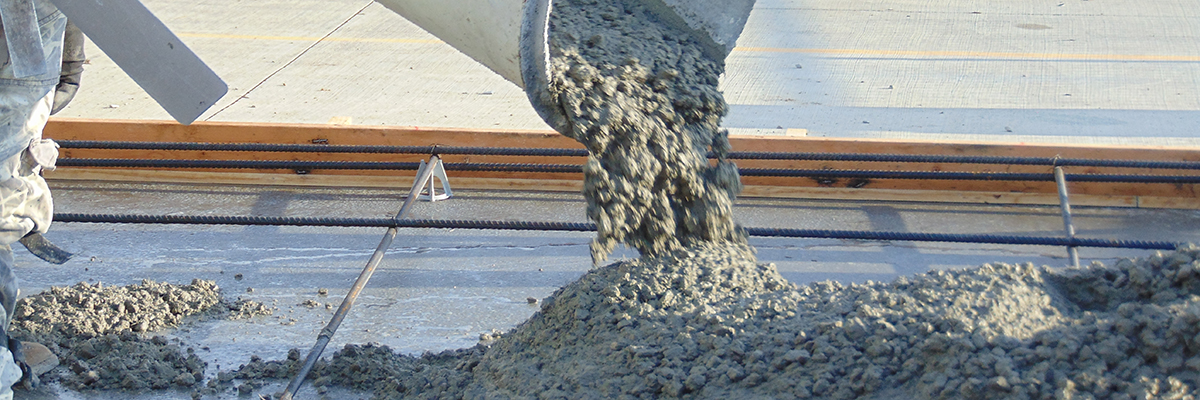There’s an innovative solution to conventional labor-intensive, time-consuming processes in ICF construction and it’s only produced by Helix St
An exploration of the construction industry’s favorite concrete reinforcements
Concrete is extremely strong, but trying to keep it held together can require Herculean effort. Fortunately, a wide range of concrete reinforcement options are available to address this exact challenge.
Steel Rebar
The good: Rebar is well-known and used around the world to create everything from concrete slabs all the way up to supertall skyscrapers. Being plentiful means that most rebar is cheap to produce and inexpensive to buy. There is a wide range of grades and lengths to conform with your project’s requirements, and can be coated in epoxy to delay corrosion.
The bad: Unfortunately, this widely accepted concrete reinforcement product does not stop cracks from forming; rebar only delays cracks’ progression. It can corrode easily when exposed to water or air, and so significantly reduces the lifespan of buildings and infrastructure projects. Many of these projects require significant quantities of rebar which are difficult to transport and costly to install.
Rebar is a great solution if you want a cheap product and do not care about long-term maintenance.
Fiberglass Rebar
The good: Only a quarter of the weight of rebar, fiberglass does not corrode and so can last much longer than standard rebar. It also has higher tensile strength.
The bad: Fiberglass rebar needs to be fabricated prior to installation, so each rebar bend can take time and additional cost to produce. The lightweight material is easier to handle, which can reduce installation costs, but can still take days to complete. Most importantly, there is no basis for code approval with fiberglass rebar, and so cannot be used in applications pertaining to the Building Code.
Like steel rebar, this solution just bandages concrete cracks and does nothing to prevent cracks from forming.
Welded Wire Mesh
The good: Since the bars are welded together, they do not move as much as rebar. Mistakes are reduced and installation is much faster than other options; With less lugging and tying, your labor costs will be reduced. Welded wire mesh also comes in many options such as stainless steel, aluminum, copper and galvanized steel.
The bad: Cracks in the concrete will still form, and the mesh may stop them before they get worse. Mesh is often thinner and thus weaker than rebar, used only for non-structural solutions.
Fibers (Plastic and Glass)
The good: Fiber is evenly dispersed throughout the concrete to give 100% coverage. It’s easy to handle and faster to install than the options above. It will not rust, so corrosion is not a concern, and has a low weight-to-strength ratio.
The bad: Pouring and finishing concrete with fibers can be frustrating and can result in low-quality concrete. There are issues with freeze-thaw resistance, and glass will break down. Any synthetic or glass fiber will need to be ordered in large quantities to ensure appropriate disbursement – unfortunately many fiber products are sold by businesses that do not assist in engineering. Since it is not able to be used in Building Code applications, designs and evaluation reports are not available.

Helix® Micro Rebar™
The good: This final option is only one inch (25 millimeters) long and twisted to ensure a significant increase in tensile and flexural strength of concrete. Most of your concrete reinforcement labor costs will be reduced to nothing, as well as health and safety costs – the product comes in easy-to-handle 45-lb (20-kg) boxes.
Each piece is coated for extra corrosion resistance, resulting in durability that resists the creation of cracks. Helix® Micro Rebar™ has a patented design that has resulted in code-approved usage in concrete applications including: slabs on grade, foundations, walls, precast, infrastructure and slabs on metal deck.
Helix Steel’s in-house engineers work with customers to ensure proper dosages and offer advice on project specifications. These benefits add up to significant cost and time savings for those in the building industry who are seeking a superior product while also cutting construction schedules.
Helix Steel has 20 years’ experience creating alternative reinforcement solutions in structural applications, with two Building Code-accepted evaluation reports from ICC and IAPMO using methods in ACI 318 and ACI 332.
The bad: The construction industry tends to shy away from innovation, even when it means significant benefits for them and their customers. Helix® Micro Rebar™ does not yet have widespread use, so engineers, contractors and developers are hesitant about pursuing this option further.
Upgrade Your Concrete With the Concrete Reinforcement That Holds
If you are seeking to build better with concrete, there is no other faster, cheaper and better way to reinforce many concrete applications than Helix® Micro Rebar™. Speak with the Helix Steel team about the advantages and disadvantages of these concrete reinforcements, and learn how Helix® Micro Rebar™ could benefit you and your project soon.
More News

Building Better Homes Starts with ICF and Helix Micro Rebar

The Better Way to Build in Every Direction
Whether you’re building below-grade or above-grade, the tiny twisted concrete reinforcement known as Helix Micro Rebar is taking the construction world in new directions

Is Your Business Still Living in the Rebar Age?
If you’re in the construction industry to improve buildings, revolutionize processes and work smarter, it may be time to rethink your concrete reinforcement.


